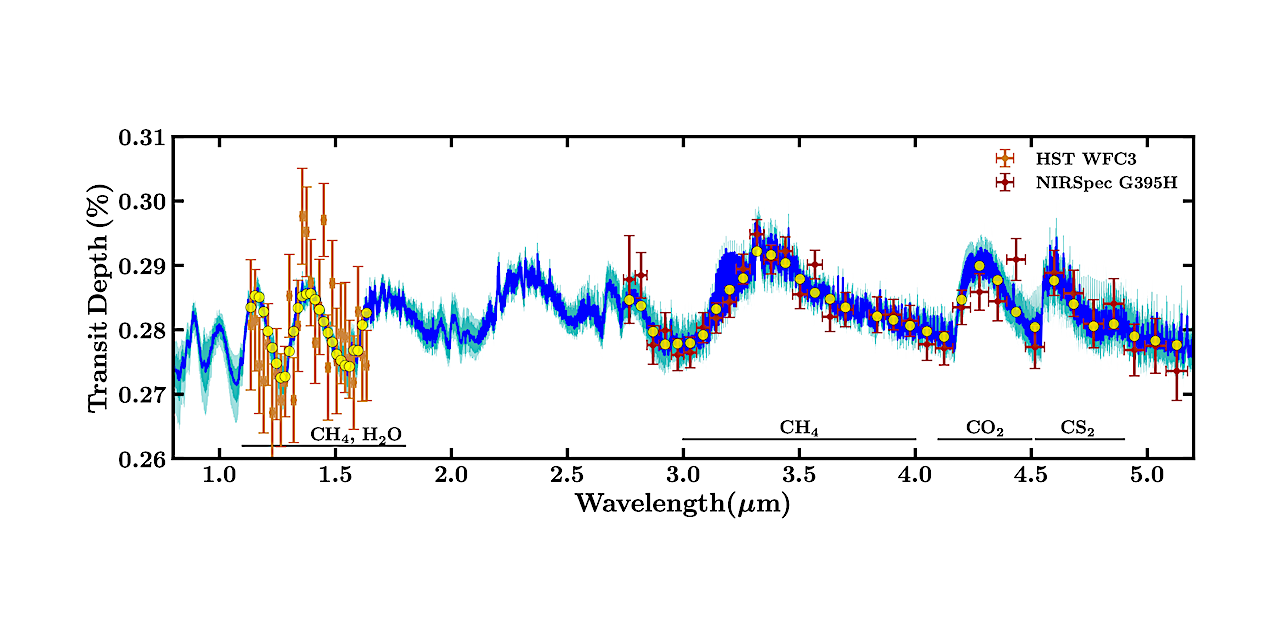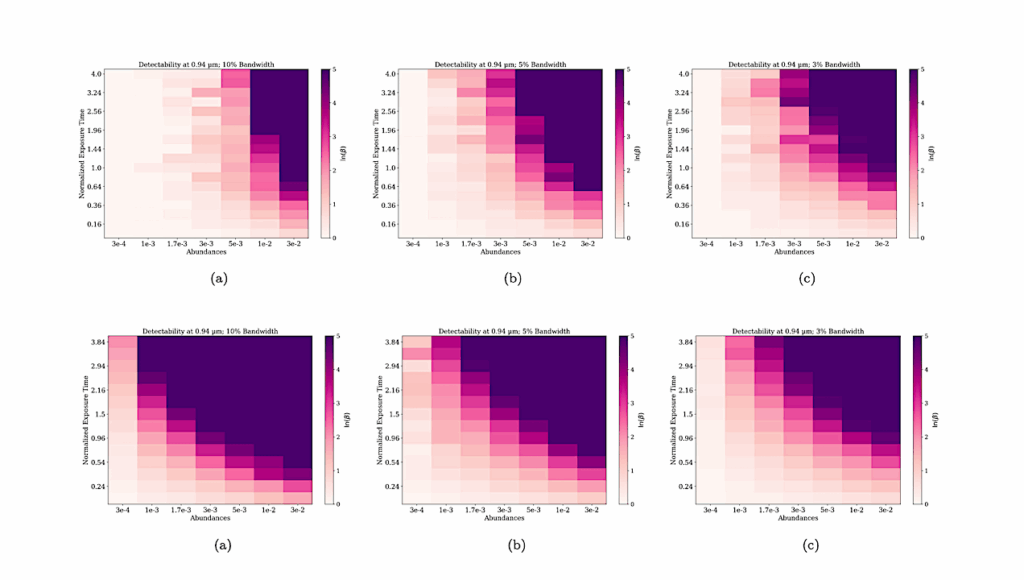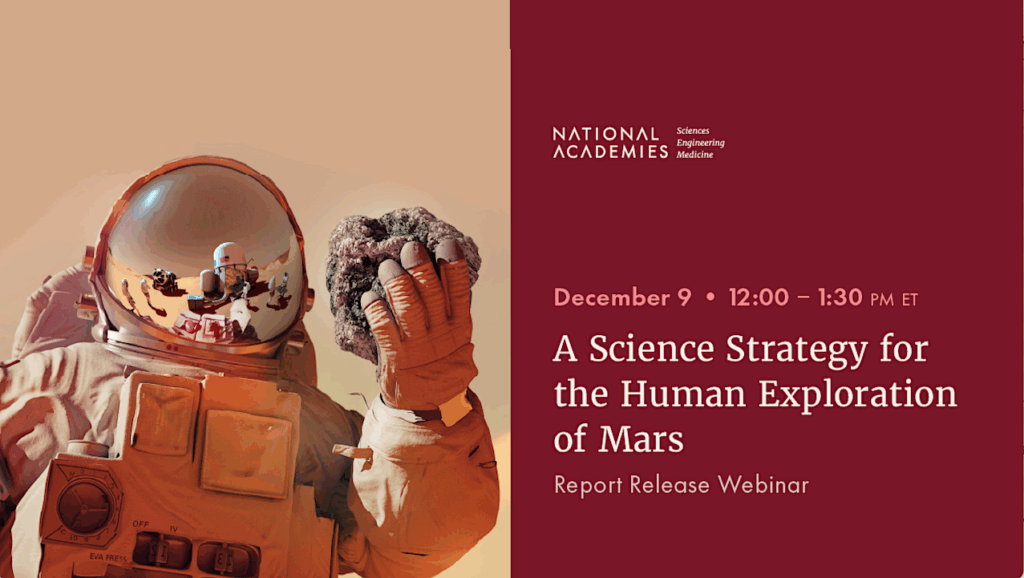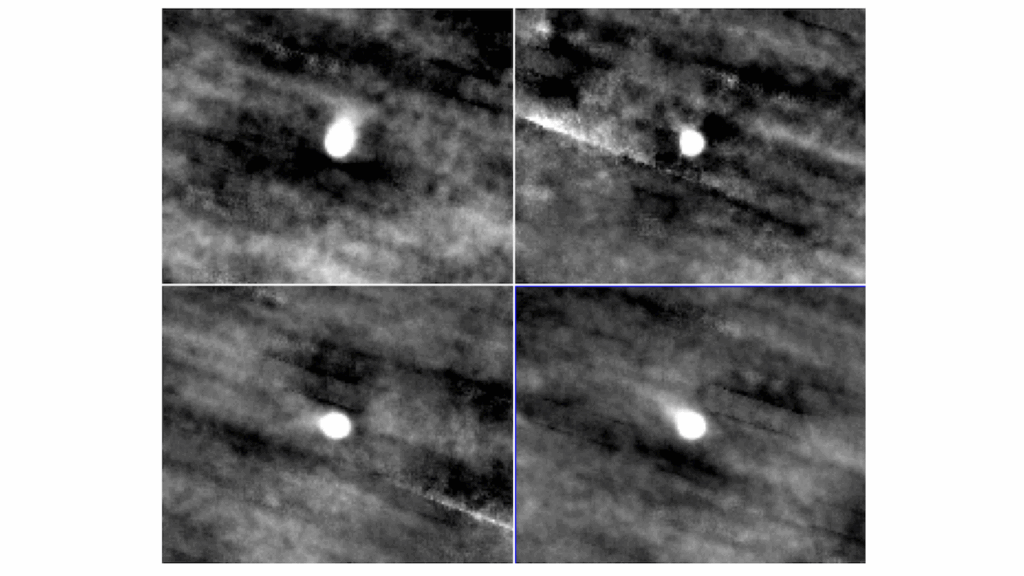Possible Hycean Conditions In The sub-Neptune TOI-270 d

The JWST has ushered in a new era in atmospheric characterisations of temperate low-mass exoplanets with recent detections of carbon-bearing molecules in the candidate Hycean world K2-18 b.
We investigated JWST observations of the TOI-270 system, with two sub-Neptunes simultaneously transiting the nearby M dwarf during the visit. We report our atmospheric characterisation of the outer planet TOI-270 d, a candidate Hycean world, with JWST transmission spectroscopy using the NIRSpec G395H instrument in the 2.7-5.2 μm range, combined with previous observations obtained with the HST WFC3 spectrograph (1.1-1.6 μm).
The spectrum reveals strong signatures of CH4 and CO2 at 3.8-4.9σ and 2.9-3.9σ confidence, respectively, and no evidence of NH3. The abundant CH4 and CO2, at ~0.1-1% mixing ratios, and the non-detection of NH3 are similar to the findings reported for K2-18 b and consistent with predictions for a Hycean world with a planet-wide ocean under a H2-rich atmosphere.
We also report evidence of CS2 at a 2.3-3.0σ confidence and a potential inference of H2O at 1.6-4.4σ, depending on the data analysis approach, and discuss possible interpretations of these results. The spectrum does not provide strong constraints on the presence of clouds or hazes in the observable atmosphere, nor any evidence for the effects of stellar heterogeneities, which is consistent with previous studies.
For the smaller inner planet TOI-270 b, we find that the spectrum is inconsistent with a featureless spectrum at ~3σ, showing some preference for an H2-rich atmosphere in a super-Earth. We discuss the implications of our findings and future prospects.
Måns Holmberg, Nikku Madhusudhan
Comments: Accepted for publication in Astronomy & Astrophysics Letters
Subjects: Earth and Planetary Astrophysics (astro-ph.EP)
Cite as: arXiv:2403.03244 [astro-ph.EP] (or arXiv:2403.03244v1 [astro-ph.EP] for this version)
Submission history
From: Madhusudhan Nikku
[v1] Tue, 5 Mar 2024 19:00:00 UTC (5,993 KB)
https://arxiv.org/abs/2403.03244
Astrobiology,








